Some rivers aren’t just peaceful fishing spots—they’re crawling with venom. In parts of the U.S., venomous snakes like copperheads, cottonmouths, and rattlesnakes quietly patrol riverbanks, slither through reeds, and hide in plain sight. Whether you’re kayaking through the bayou or casting a line in the South, you might be sharing the water with some seriously dangerous company. But not all rivers are risk zones. A handful of places still exist where you can splash, swim, and explore without worrying about a snake surprise. So where should you stay alert—and where can you relax? This list separates the danger zones from the safe havens, giving you a real look at which rivers are home to these fanged reptiles… and which ones aren’t.
Mississippi River
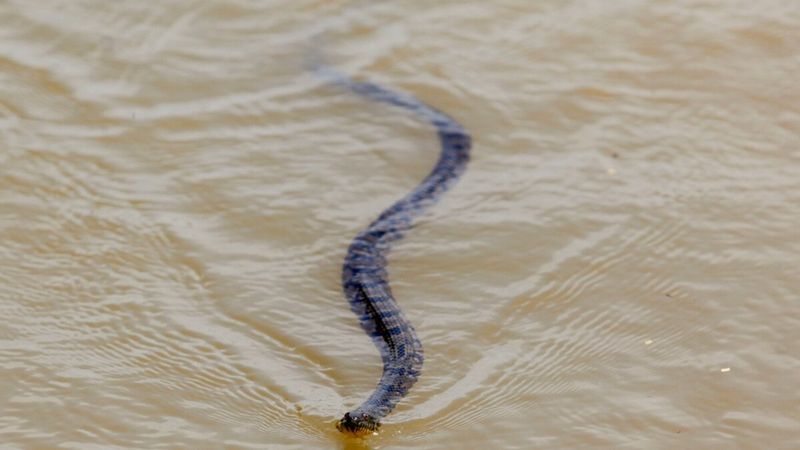
The Mississippi River, with its sprawling, lush banks, serves as a thriving habitat for timber rattlesnakes, copperheads, and cottonmouths. These venomous snakes bask along the river’s edge, hiding among the dense foliage.
This river’s extensive system offers a perfect mix of swamps and wetlands, making it a favored spot for these reptiles. Curious explorers should tread carefully, as these snakes are masters of camouflage.
Did you know? The Mississippi is one of North America’s longest rivers, stretching over 2,300 miles and passing through 10 states, creating diverse ecosystems along its course.
Missouri River
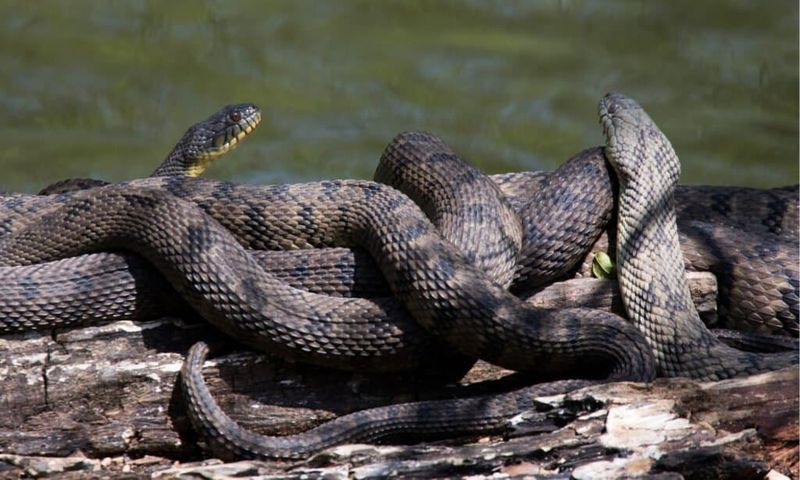
The Missouri River, a significant tributary of the Mississippi, hosts a rich community of venomous snakes. Cottonmouths and timber rattlesnakes find sanctuary here, amidst the river’s winding pathways and lush banks.
These creatures thrive in the river’s temperate climate, where ample food sources abound. The riparian zones are particularly favored by snakes seeking shelter from the sun.
Quirky fact: The Missouri River is the longest in North America, stretching over 2,300 miles. It has played a crucial role in shaping America’s history, from Native American settlements to Lewis and Clark’s expedition.
Arkansas River
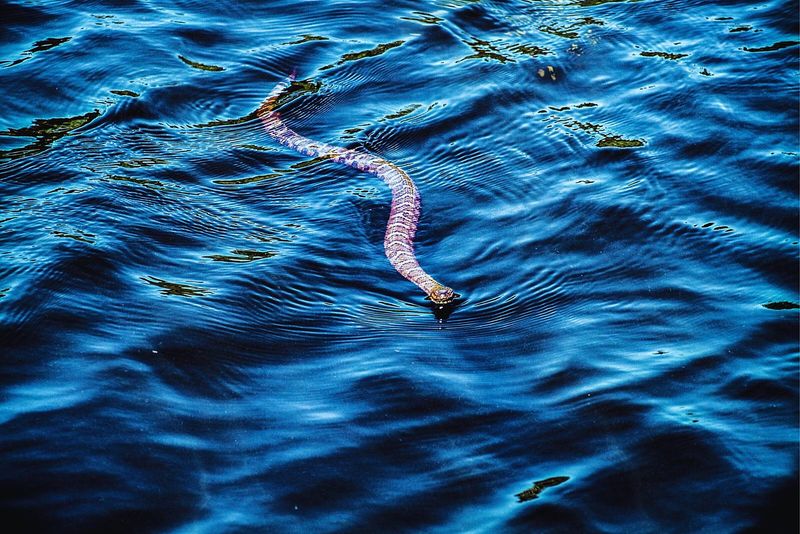
The Arkansas River is home to the notorious northern cottonmouth and other venomous snakes. These creatures are frequently spotted along the river’s grassy banks, where they lie in wait for unsuspecting prey.
With a mix of wetlands and forested areas, the river provides an ideal habitat for these reptiles. Visitors should remain vigilant, as the snakes’ stealthy presence is often hidden from plain view.
Intriguing tidbit: The Arkansas River runs a course of about 1,469 miles, cutting through major states and playing a vital role in their agricultural landscapes.
Cumberland River
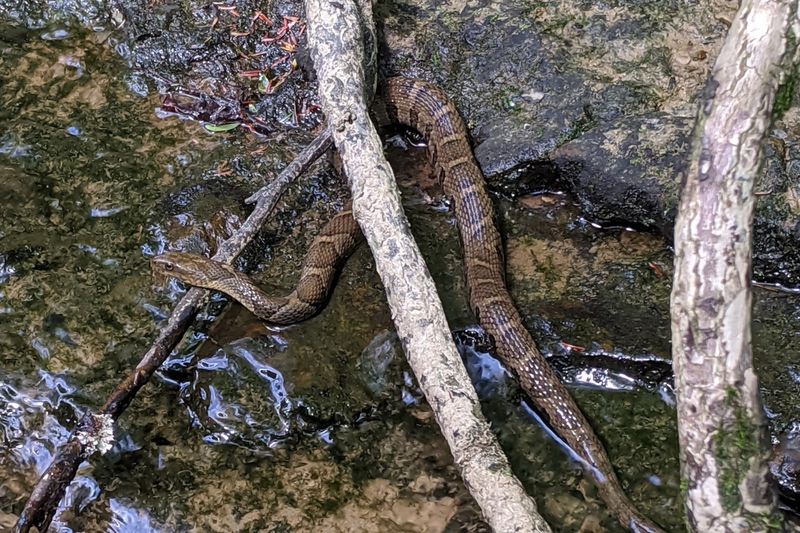
The Cumberland River, flowing through Kentucky and Tennessee, is a serene yet potentially dangerous locale. Copperheads, cottonmouths, and timber rattlesnakes are common visitors along its banks.
These snakes thrive in the river’s rich ecosystems, where forests meet water, creating a perfect hunting ground. The tranquility of the river can be deceiving to those unaware of its hidden inhabitants.
Historical note: The river’s name is derived from the Duke of Cumberland, a British noble. Over the years, it has been a lifeline for trade and transportation in the region.
Colorado River
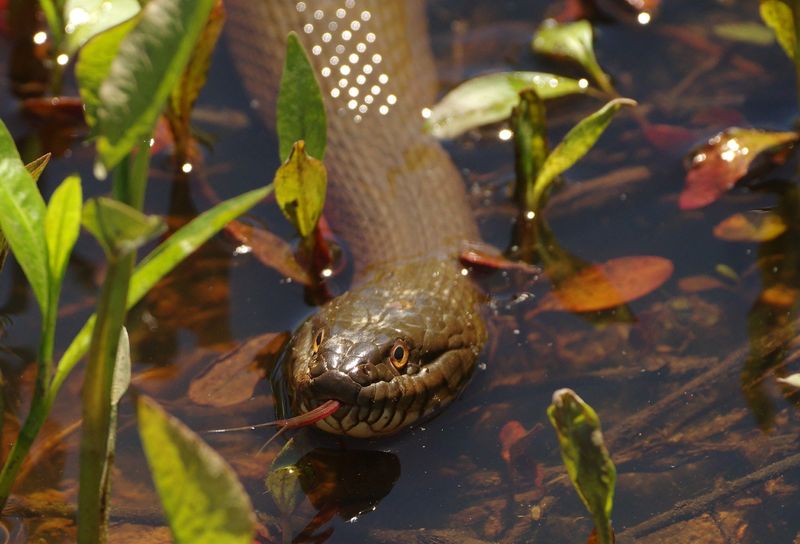
The Colorado River, cutting through the American Southwest, is a rugged environment where cottonmouths and rattlesnakes thrive. These venomous snakes are drawn to the river’s riparian zones, which offer both food and shelter.
The rocky terrain and arid climate create challenging conditions, yet these snakes have adapted to survive. Explorers should exercise caution in these parts.
Trivia: The Colorado River is famed for carving out the Grand Canyon, a testament to nature’s raw power and beauty. Its waters are a vital resource for millions across the region.
Rio Grande
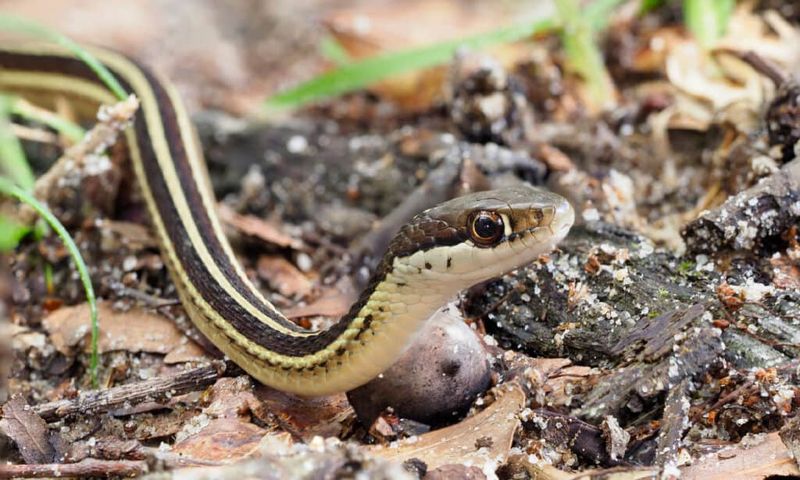
The Rio Grande, a natural boundary between the U.S. and Mexico, is home to western diamondbacks and cottonmouths. These snakes are often found exploring the river’s vast riparian habitat.
The river’s varied landscapes, from deserts to wetlands, offer diverse environments for these reptiles to thrive. Visitors should be mindful of these snakes’ presence, as they blend easily into their surroundings.
Did you know? The Rio Grande stretches over 1,800 miles, making it one of the longest rivers in North America and a crucial water source for the arid regions it traverses.
Brazos River
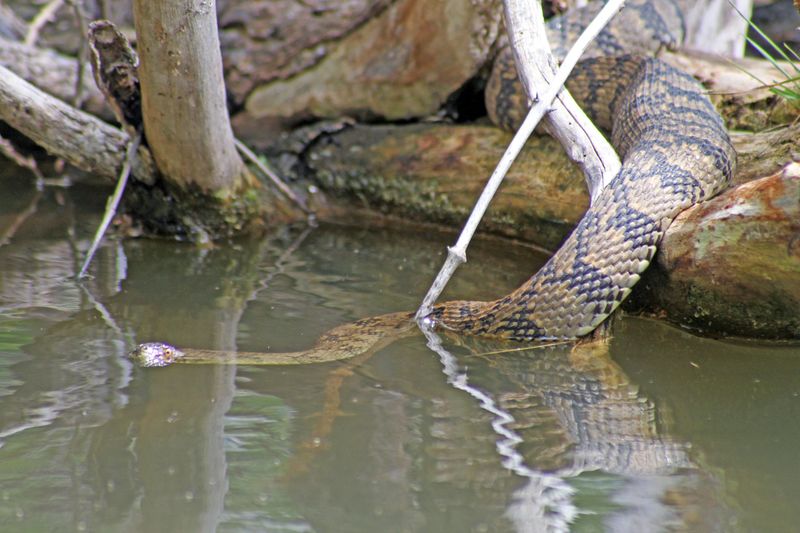
The Brazos River in Texas is a vibrant ecosystem where cottonmouths, copperheads, and diamondback rattlesnakes are frequently seen. Its banks provide ample cover and hunting grounds for these reptiles.
As one of Texas’s longest rivers, the Brazos offers a mix of woodlands, prairies, and wetlands. The diversity of habitats supports a rich array of snake species.
Fun fact: The Brazos River is often referred to as “The Nile of Texas,” owing to its significant role in the state’s agricultural and recreational activities.
Alabama River
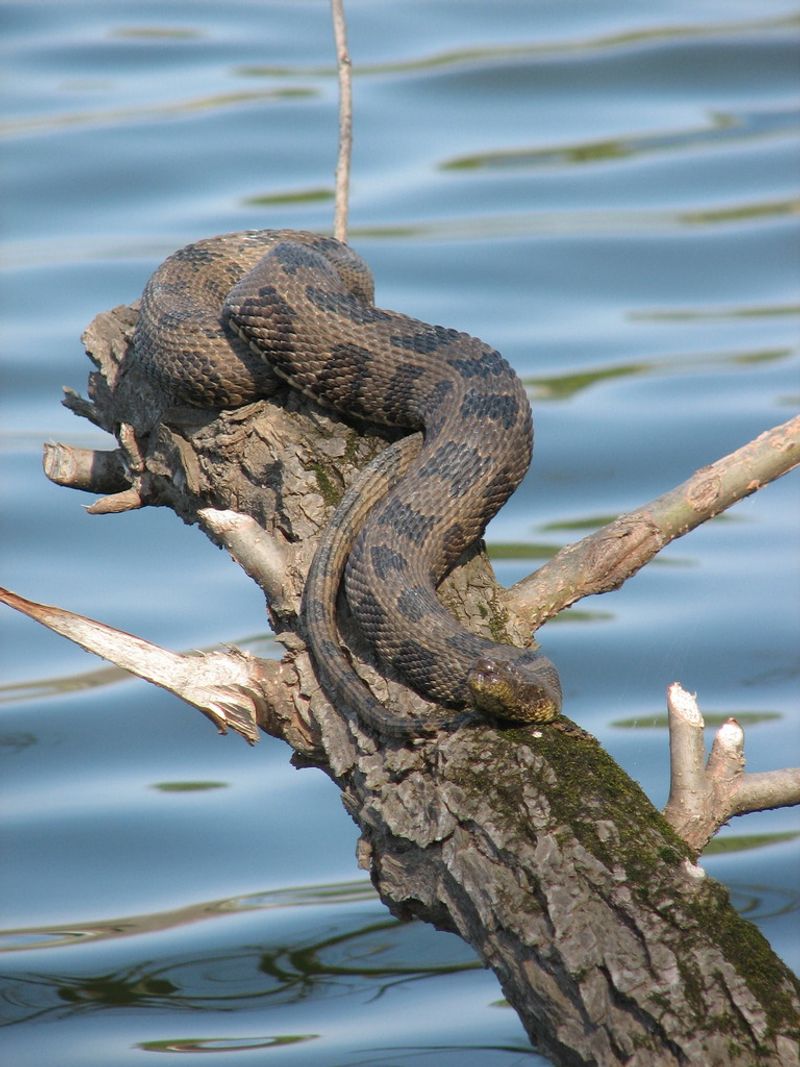
The Alabama River, with its lush riverine forests, is a favored spot for northern cottonmouths. These snakes are drawn to the dense vegetation and abundant water sources.
The river’s natural beauty masks the potential danger lurking within. Hikers and nature enthusiasts should be cautious when exploring this vibrant ecosystem.
Interesting tidbit: The Alabama River is formed by the confluence of the Coosa and Tallapoosa rivers. It has played a vital role in the cultural and economic development of the region throughout history.
Comal River

The Comal River in Texas is known for its tranquil waters and non-venomous snake population. However, copperheads and rattlesnakes have been occasionally recorded upstream.
This unique setting offers a blend of relaxation and caution for visitors. While the calm waters invite swimming and leisure, the presence of these venomous snakes reminds one of nature’s unpredictability.
Did you know? The Comal River is one of the shortest navigable rivers in the U.S., measuring only 2.5 miles in length, yet it’s a popular spot for tubing and recreation.
Guadalupe River

The Guadalupe River, similar to its neighbor, the Comal, features a mix of water snakes and occasional venomous species such as copperheads and rattlesnakes.
This river’s winding course through Texas’s landscapes provides diverse habitats. Visitors should enjoy the scenery while remaining aware of their surroundings.
Fun fact: The Guadalupe River is renowned for its scenic beauty and is a favorite destination for water sports, including kayaking and fishing. Its waters draw nature lovers from far and wide.
Lake Hartwell

Lake Hartwell, straddling Georgia and South Carolina, is known for its clear waters and picturesque surroundings. Copperheads are occasionally reported along its shorelines.
The lake’s combination of forests and beaches creates an idyllic setting where these snakes can thrive. Visitors should keep an eye out for these elusive reptiles amid the beauty.
Interesting note: Lake Hartwell is one of the Southeast’s largest recreational lakes, offering a wide range of activities from boating to fishing, attracting thousands of visitors each year.
Everglades waterways
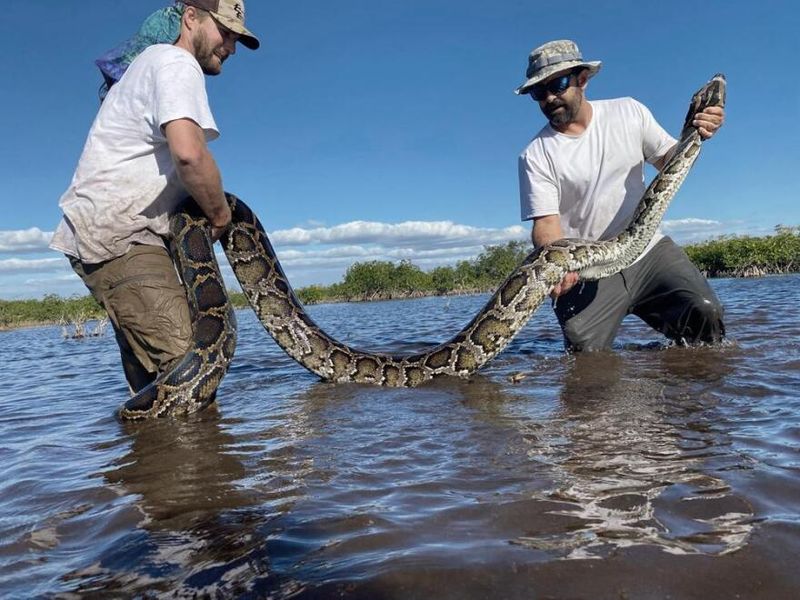
The Everglades waterways in Florida are a sprawling maze of wetlands teeming with wildlife, including eastern diamondback rattlesnakes and cottonmouths. These snakes are a natural part of the ecosystem.
The Everglades’ unique environment provides food, shelter, and breeding grounds for these reptiles. Adventurers should navigate these waters with respect and awareness.
Did you know? The Everglades is a UNESCO World Heritage site and a vital habitat for countless species, playing an essential role in Florida’s ecological balance and biodiversity.
Shawnee National Forest streams

The streams of Shawnee National Forest in Illinois are home to cottonmouths, which inhabit the nearby marshy areas. These snakes are well-adapted to the forest’s humid and lush environment.
Explorers venturing into these parts should be prepared for encounters with these formidable reptiles, as they are masters at blending into their surroundings.
Fun fact: Shawnee National Forest spans over 280,000 acres, offering a diverse range of landscapes from rugged bluffs to tranquil streams, making it a popular destination for outdoor enthusiasts.
Guadalupe–Comal confluence
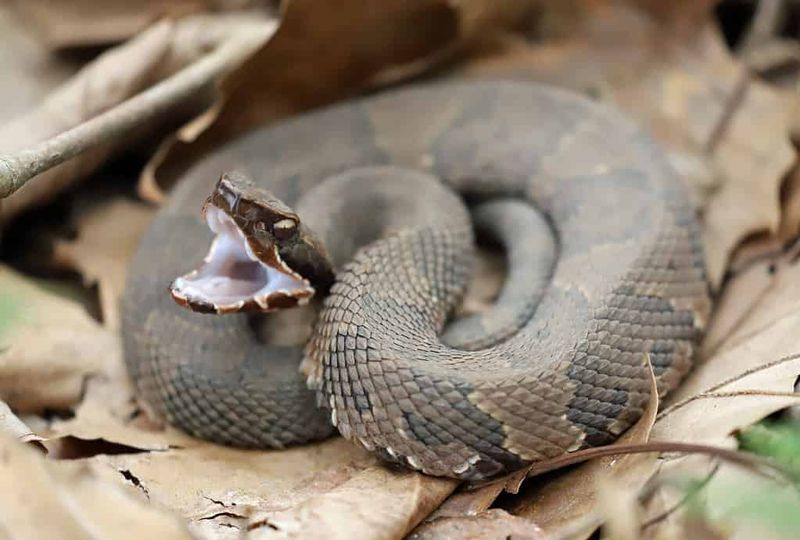
The confluence of the Guadalupe and Comal Rivers is a unique environment where venomous snakes, including rattlesnakes, have been documented. This spot is a fascinating mix of two river ecosystems.
The merging of these waters creates a diverse habitat that supports a variety of wildlife, including snakes. Visitors should be cautious, as the snakes’ stealthy presence often goes unnoticed.
Did you know? This confluence is a favorite spot for birdwatchers and naturalists, offering a rich tapestry of flora and fauna in one location.
Various tributaries
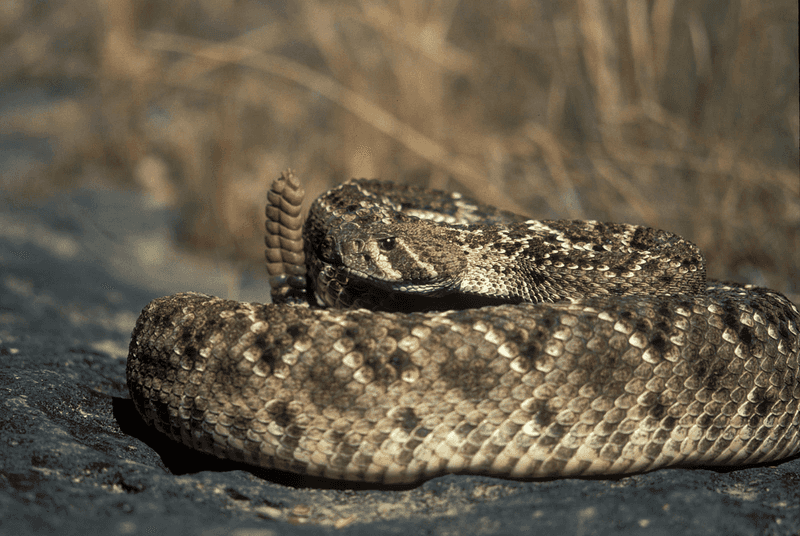
Various tributaries branching off these major rivers are known to harbor venomous snakes. Wildlife studies have confirmed the presence of these reptiles in smaller feeder streams.
These tributaries offer rich, secluded habitats where snakes can thrive away from human activity. Explorers should remain vigilant when venturing into these lesser-known waterways.
Interesting tidbit: Tributaries play a crucial role in the ecological health of main rivers, feeding them with fresh water and supporting diverse ecosystems that include both prey and predators.
Alaska
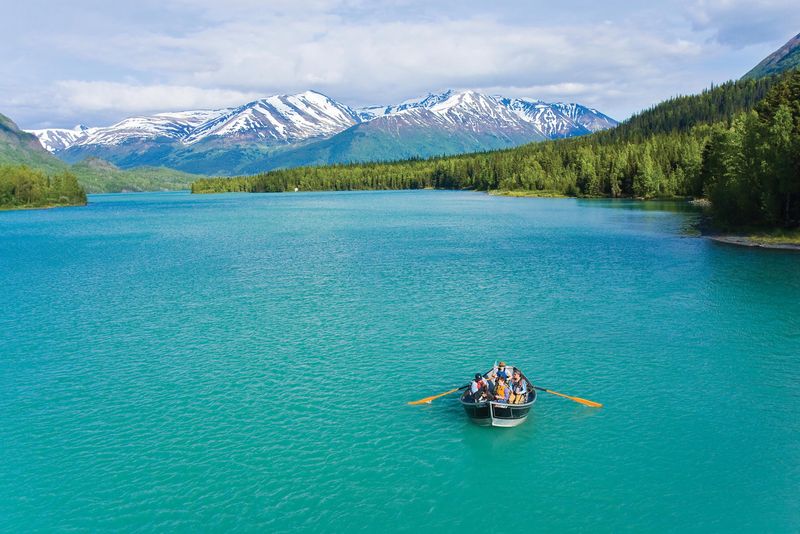
Alaska stands as a beacon of safety for those wary of snakes. Remarkably, it has no native snake species at all, making it a unique haven for outdoor enthusiasts who prefer serpent-free adventures.
The state’s cold climate and rugged terrain are inhospitable to snakes, ensuring a peaceful exploration experience. Visitors can hike, camp, and roam without the worry of encountering slithering surprises.
Fun fact: Alaska is known for its breathtaking wilderness, featuring towering mountains and expansive forests, offering endless opportunities for wildlife observation sans snakes.
Hawaii
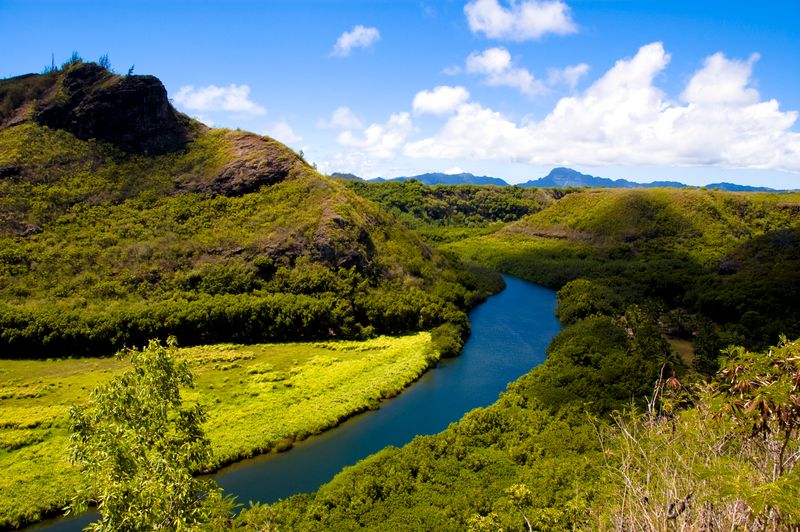
Hawaii, the tropical paradise, takes pride in having no native venomous snakes. The state’s strict biosecurity measures ensure that these reptiles remain absent, maintaining a serene environment for residents and tourists alike.
The island’s diverse ecosystems, from volcanic landscapes to sandy beaches, can be explored with ease and without fear of venomous encounters.
Did you know? Hawaii’s isolated location in the Pacific Ocean has led to unique evolutionary paths for its flora and fauna, contributing to its reputation as a natural wonder and a snake-free zone.
Maine
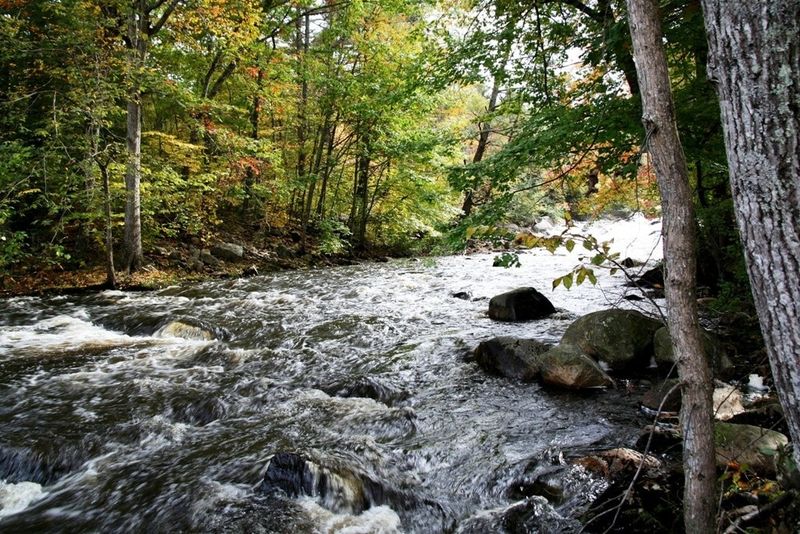
Maine’s vast, forested landscapes are home to only non-venomous snakes. This makes it a welcoming destination for those who wish to enjoy nature without the threat of venomous reptiles.
The state’s cool climate and diverse habitats support a variety of wildlife, ensuring a balanced ecosystem. Visitors can explore the wilderness, knowing that the snake population poses no harm.
Trivia: Maine is renowned for its stunning coastline and dense forests, known as the “Pine Tree State.” Its natural beauty attracts visitors seeking a peaceful escape in nature.
Rhode Island
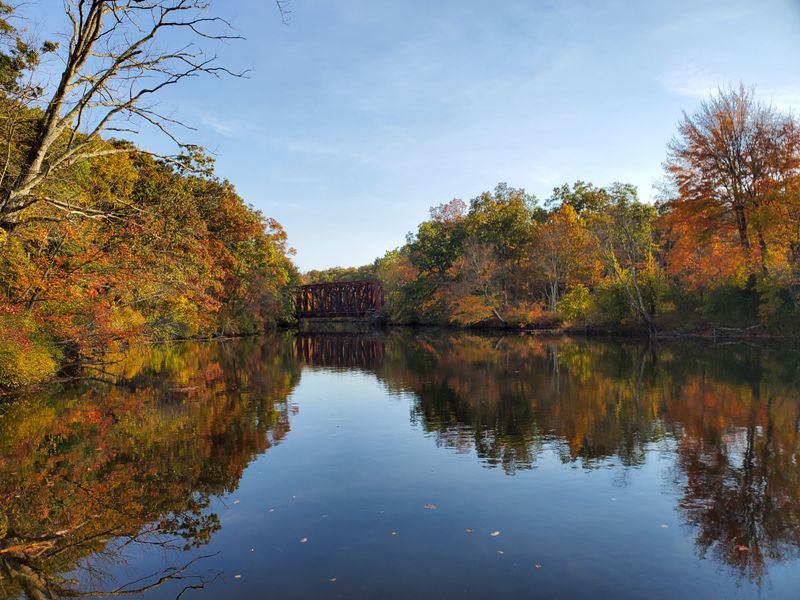
Rhode Island, the smallest state, boasts rare and non-venomous snake sightings. The coastal and woodland areas offer habitats for these harmless creatures, making it a safe zone for snake-wary explorers.
While snakes are a rare sight, visitors can enjoy the state’s charming landscapes without concern. The combination of beaches and forests creates a picturesque setting.
Fun fact: Despite its size, Rhode Island is rich in colonial history and offers a variety of outdoor activities, making it a popular destination for both culture and nature lovers.
New Hampshire
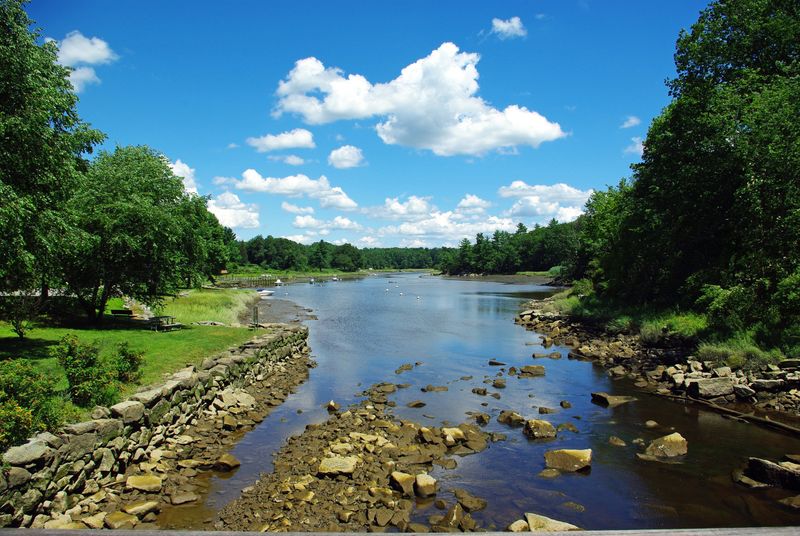
New Hampshire’s scenic landscapes present a near negligible risk from venomous snakes. The once-native timber rattlesnake is now nearly extinct, leaving the state mostly free from venomous threats.
The state’s mix of mountains, forests, and lakes can be explored peacefully, offering a serene backdrop for outdoor activities.
Did you know? New Hampshire, known as the “Granite State,” is famed for its natural beauty and is a favorite spot for hiking, skiing, and leaf-peeping, attracting visitors year-round.

